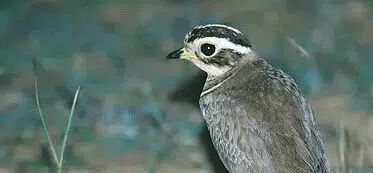
The Negros Fruit-dove is, like its close relatives of the genus Ptilinopus, a beautiful bird, with vivid green plumage marked with bright yellow on the wing and belly, and a wide, yellow ring around the eye. Or should we say ‘was’ a beautiful bird – could it be extinct? Since its discovery, it has proved even more deserving of its scientific name arcanus, meaning secret or hidden, than its (evidently surprised) discoverers realised. The first and only record came from the forests of the Philippine island of Negros in 1953. Ornithological exploration of the island had begun long before and has continued since, yet this remains the only report.
There are grounds to think it is not extinct: a reasonable area of forest survives on Negros, with more on the nearby island of Panay, which holds almost all the same species, and there have been reports from local people of birds fitting its description. Could the lack of records be because it represents an ‘aberrant’ or unusual-looking individual of another species? But no other species comes close to a likeness, allowing for any known form of aberration. And so it remains on the Red List, as Critically Endangered: mysterious but not Extinct.
The Negros Fruit-dove is, like its close relatives of the genus Ptilinopus, a beautiful bird, with vivid green plumage marked with bright yellow on the wing and belly, and a wide, yellow ring around the eye. Or should we say ‘was’ a beautiful bird – could it be extinct? Since its discovery, it has proved even more deserving of its scientific name arcanus, meaning secret or hidden, than its (evidently surprised) discoverers realised. The first and only record came from the forests of the Philippine island of Negros in 1953. Ornithological exploration of the island had begun long before and has continued since, yet this remains the only report.
There are grounds to think it is not extinct: a reasonable area of forest survives on Negros, with more on the nearby island of Panay, which holds almost all the same species, and there have been reports from local people of birds fitting its description. Could the lack of records be because it represents an ‘aberrant’ or unusual-looking individual of another species? But no other species comes close to a likeness, allowing for any known form of aberration. And so it remains on the Red List, as Critically Endangered: mysterious but not Extinct.
It turns out that dozens of other bird species (not to mention other animals and plants) are in a similar state: ‘lost’ but not
presumed Extinct. Such knowledge gaps beg to be filled, and can inspire fieldworkers who may relish the chance to get out and look for them, often in the biologically richest parts of the planet, and potentially make other discoveries too. As
the biodiversity and extinction crises worsen, uncertainties like this can cloud our understanding of the situation, and make it harder to set the right conservation priorities.
This is why a new global search effort is calling on researchers, conservationists and the global birdwatching community to mount the Search for Lost Birds, through a collaboration between BirdLife International (through our Preventing Extinctions Programme), American Bird Conservancy (BirdLife in the US) and Re:wild, with data support from the Cornell Lab of Ornithology and its eBird Platform.
For the purposes of this initiative, ‘lost’ species are those with no documented sighting in the wild for at least 10 years and that are not classified as Extinct on the Red List. There are around 50 such species. Some, like the Negros Fruit-dove, have been lost much longer than this, but as the recent rediscovery of the Black-browed Babbler in Borneo 172 years after the only previous record shows, this need not mean it is too late. Others have been seen in the 21st century, but with a worrying lack of recent information. Someone needs to find them again, and keep the populations under observation, taking action to prevent them slipping away.
Alongside Black-browed Babbler, we can take heart from the story of Madagascar Pochard. After its rediscovery by the Peregrine Fund in 2006, its population was studied and monitored, the site and its surroundings (found to support an outstanding community of threatened and endemic wildlife) legally protected, and a reintroduced population was established and is now breeding elsewhere within its historical range.
Here, we outline a top 10 list of lost birds to seek out, spanning all regions, across the tree of (bird) life, from a delicate hummingbird to a raptor. Negros Fruit-dove is one. Here are the other nine.
